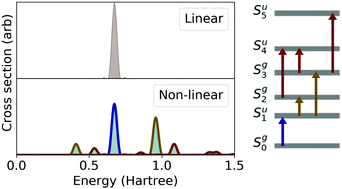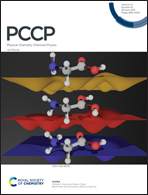Nonlinear light absorption in many-electron systems excited by an instantaneous electric field: a non-perturbative approach†
Abstract
Applications of low-cost non-perturbative approaches in real time, such as time-dependent density functional theory, for the study of nonlinear optical properties of large and complex systems are gaining increasing popularity. However, their assessment still requires the analysis and understanding of elementary dynamical processes in simple model systems. Motivated by the aim of simulating optical nonlinearities in molecules, here exemplified by the case of the quaterthiophene oligomer, we investigate light absorption in many-electron interacting systems beyond the linear regime by using a single broadband impulse of an electric field; i.e. an electrical impulse in the instantaneous limit. We determine non-pertubatively the absorption cross section from the Fourier transform of the time-dependent induced dipole moment, which can be obtained from the time evolution of the wavefunction. We discuss the dependence of the resulting cross section on the magnitude of the impulse and we highlight the advantages of this method in comparison with perturbation theory by working on a one-dimensional model system for which numerically exact solutions are accessible. Thus, we demonstrate that the considered non-pertubative approach provides us with an effective tool for investigating fluence-dependent nonlinear optical excitations.



 Please wait while we load your content...
Please wait while we load your content...